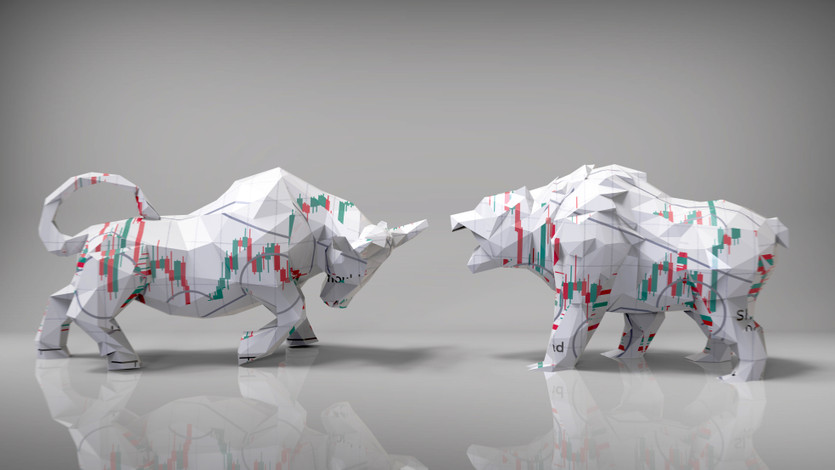Introduction to Bull Markets
A bull market describes a financial market scenario where prices are either increasing or anticipated to increase. The phrase "bull market" often refers to the stock market, but it can also apply to bonds, commodities, real estate, and currencies. Typically, a market is identified as "bullish" when stock prices see a rise of 20% or more.
Bull markets usually extend over a significant time period, with a substantial portion of security prices increasing. This period can stretch over months, or even years. The key attributes of a bull market include investor optimism and the expectation that these favorable outcomes will persist over an extended time frame. However, predicting the exact moment when market trends might shift can be challenging due to the influence of psychological factors and market speculation.
While there is no universally accepted metric to signify a bull market, it's commonly understood as a situation where stock prices increase by 20% or more from recent lows. Identifying a bull market can be challenging and typically is only confirmed in hindsight. For instance, the period from 2003 to 2007 was recognized as a bull market after a significant increase in the S&P 500 following a prior decline.
Causes of Bull Markets
Bull markets usually emerge when the economy is gaining strength or already robust. They align with substantial GDP growth, decrease in unemployment, and often coincide with corporate profit increases. Investor confidence tends to rise during a bull market phase. This positive sentiment fuels the demand for stocks, creating a favorable market atmosphere. Moreover, Initial Public Offerings (IPOs) generally increase during bull markets.
While some of these factors, like corporate profits and unemployment, are quantifiable, others such as the overall market sentiment are harder to measure. In a bull market, the supply-demand dynamics skew towards strong demand and weak supply. Investors are keen to acquire securities, while few are willing to sell, leading to higher willingness to participate in the market for potential profits.
Traits of Bull Markets
Bull markets exhibit certain distinct traits. For one, trading volume escalates as investors buy and retain securities in anticipation of capital gains. Securities in a bull market typically garner higher valuations as investors are prepared to pay a premium due to the potential for price appreciation.
Moreover, bull markets often feature increased market liquidity due to heightened demand for securities and fewer sellers. This dynamic makes it easier for investors to transact quickly at fair prices. High-performing companies might choose to reward their shareholders by boosting dividends, which can be appealing to income-focused investors. Additionally, there's often an uptick in companies going public and raising capital via IPOs, offering investors chances to invest in rising firms.
Bull Markets versus Bear Markets
A bear market, characterized by falling prices and prevalent pessimism, is the antithesis of a bull market. The origin of these terms is believed to stem from the attacking styles of these animals: a bull thrusts its horns upward, signifying a rising market, while a bear swipes its paws downward, symbolizing a declining market.
Bull and bear markets often correspond with the four phases of the economic cycle: expansion, peak, contraction, and trough. Bull markets often precede economic expansion, as the market tends to rise before the broader economic measures like GDP growth start increasing. Conversely, bear markets usually precede economic contraction.

Strategies for Leveraging a Bull Market
Investors aiming to profit from a bull market should purchase early to ride the wave of rising prices and sell when they peak. Although pinpointing the bottom and peak can be difficult, losses in bull markets are typically minimal and temporary. Here are some strategies investors may employ during bull markets:
Buy and Hold
This basic investing strategy involves purchasing a particular security and retaining it for a potential sale at a later date. This strategy requires an investor's confidence in the market, as holding onto a security is usually based on the expectation of its price rising. The positivity that accompanies bull markets fuels this strategy.
Increased Buy and Hold
This approach is a variation on the conventional buy and hold strategy and carries added risk. In the increased buy and hold strategy, an investor keeps adding to their holdings of a specific security as long as its price continues to increase.
Retracement Additions
Retracements are brief periods when the overall price trend of a security is reversed. In a bull market, some investors buy during these temporary dips with the expectation that, presuming the bull market continues, the price of the security will quickly rebound, effectively providing the investor with a discounted purchase price.
Full Swing Trading
This aggressive strategy involves active trading, using tactics such as short-selling to maximize gains as market shifts occur within the broader bull market.
Examples of Historical Bull Markets
Throughout history, there have been notable bull markets, each with unique characteristics and triggers. A few examples include:
- The Japanese Bull Market of the 1980s: Characterized by rapid economic growth and escalating asset prices, this bull market ended with the bursting of the Japanese asset price bubble in the 1990s.
- The 1990s Bull Market (Dot-Com Bubble): Driven by the rapid growth of internet and technology sectors, this bull market lasted from the early 1990s until the early 2000s and saw the S&P 500 index gain over 200%.
- The 2009 Bull Market: Beginning in March 2009 and lasting until February 2020, this bull market was the longest in history. It was driven by strong earnings growth, low interest rates, and investor optimism, resulting in a gain of over 300% for the S&P 500 index.
Bull Market Status as of 2023
As of June 8, 2023, the S&P 500 entered a bull market, surging 20% from its October 2022 lows. The index had previously been in a bear market since June 2022. The Dow Jones Industrial Average and Nasdaq have been in bull markets since November 30 and May 8, respectively.
What Drives Stock Prices in a Bull Market?
Bull markets usually coincide with a strong, growing economy. Stock prices are influenced by future profit expectations and firms' ability to generate cash flows. An economy marked by robust production, high employment, and rising GDP signals growing profits, which is reflected in rising stock prices. Low interest rates and low corporate tax rates also positively affect corporate profitability.
Bull Market Transitions to Bear Markets
When the economy stumbles, as in the case of a recession or a spike in unemployment, maintaining rising stock prices becomes challenging. Moreover, recessions often cause a negative shift in investor and consumer sentiment, with fear overtaking greed as the primary market motivator.
Conclusion: Understanding Bull Markets
In summary, a bull market signifies a financial market trend characterized by rising prices and investor optimism. Though it's most often associated with the stock market, a bull market can also apply to other trading arenas, such as bonds, real estate, currencies, and commodities. Bull markets tend to extend over longer periods, marked by rising security demand, growing corporate profits and GDP, and decreasing unemployment. The antithesis of a bull market, a bear market, is characterized by falling prices and a pessimistic outlook. Understanding the dynamics of these markets is crucial for investors seeking to maximize their returns.





